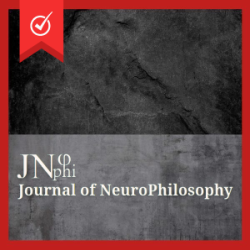The Neuronal World Model (NWM): Constructing the Illusion of Reality
What if everything we perceive — the world around us, the passage of time, the expanse of space, and even the intimate sense of “I” — is not an open window to objective reality but a grand neuronal hallucination? The Neuronal World Model (NWM), grounded in neurophilosophy and contemporary neuroscience, advances a radical reinterpretation of empirical reality by asserting that the brain does not merely represent the external world; it creates it. Through intricate patterns of electromagnetic synchronization and oscillatory dynamics, neural networks fabricate a seamless virtual reality — a coherent simulation so evolutionarily refined that it feels undeniably real.
In this framework, perception is not the passive reception of external information but an active inference process, a Bayesian game of prediction and correction. The so-called “objective world” exists for the brain only as an internally generated hypothesis, continuously updated through rhythmic neural computation. Reality, in this view, is not discovered; it is rendered. The consequence is profound: if the world and the self are neuronal fictions, then so too are our moral certainties, emotional valuations, and existential convictions. The NWM thus questions the very fabric of consciousness, challenging both traditional philosophy of mind and the neuroscientific assumption that the brain is a transparent mirror of the external world.
This paper aims to dissect how the brain constructs its own virtual cosmos, to trace how rhythmic mechanisms shape experience, and to argue that recognizing the illusory nature of consciousness may be essential for both cognitive understanding and the mitigation of mental suffering such as depression. In doing so, the NWM does not simply offer a model of mind—it offers a deconstruction of human experience itself.
1. The Neuronal World Model and the Perception of RealityThe central claim of the NWM is that there is no direct contact between the brain and the external world. Sensory organs do not transmit reality; they deliver neural codes that are interpreted and reinterpreted within the brain’s electromagnetic milieu. What we experience as reality is the end product of vast oscillatory computations — rhythmic synchronizations between neuronal ensembles generating a unified but virtual perceptual field.
In this sense, “the world” is not out there but in here: a dynamic hologram stabilized by neural coherence. The self-model, the perception of time and space, and even causality are emergent illusions — functional constructs enabling the organism to minimize uncertainty and maintain survival. The NWM thus reframes empirical reality as an adaptive simulation, biologically useful yet ontologically deceptive.
2. The Abstract–Empirical DichotomyExperience, according to the NWM, arises from the interplay between two cognitive domains: the empirical (sensory) and the abstract (conceptual, mnemonic, and imaginative). The empirical stream brings the flux of sensory inputs, while the abstract stream provides contextual scaffolding through memory, expectation, and inference. These two are not separate systems but rhythmic partners in a dance of prediction and correction.
Memory, in this model, is not archival; it is reconstructive and imaginative, constantly rewriting itself in the act of recall. Gamma-band oscillations (30–80 Hz) integrate sensory data into coherent percepts, whereas alpha (8–12 Hz) and beta (13–30 Hz) rhythms sustain the abstract, model-building functions. Their bidirectional interaction forms a Bayesian predictive hierarchy, wherein top-down expectations meet bottom-up sensations. Reality thus emerges as the brain’s best bet — an illusion statistically optimized but never verified.
3. Brain Rhythms as the Architecture of RealityOscillations are not mere epiphenomena; they are the architectural grammar of the neuronal world. Gamma rhythms contribute to the binding of perceptual features into unified experiences, while alpha and beta rhythms provide inhibitory control, establishing the conditions for abstraction, reflection, and temporal sequencing. When synchronized harmoniously, these oscillations produce the illusion of a stable world and a continuous self.
Disruptions of this rhythmic harmony lead to profound experiential distortions: the dissolution of ego boundaries in meditative or psychedelic states, temporal fragmentation in schizophrenia, or the inert temporal monotony of depression. Consciousness, therefore, is not a substance but a resonant state — an emergent rhythm of coherence among oscillating neural systems.
4. The Self-Model, Depression, and Therapeutic ImplicationsThe sense of “self” emerges as the most persistent of all illusions — a product of synchronized activity across medial prefrontal, posterior cingulate, and insular networks. Depression, within the NWM framework, is not merely a chemical imbalance but a pathological hypersynchronization of self-referential loops, resulting in rigid moral-emotional narratives and repetitive internal simulations of suffering.
In this view, pharmacological antidepressants often fail because they target neurotransmitters rather than the underlying oscillatory misalignment that sustains the illusion of a suffering self. True therapeutic relief lies in disrupting these patterns — through meditation, psychedelics such as 5-MeO-DMT, or advanced neuromodulatory interventions capable of resetting rhythmic coherence. Such interventions momentarily dissolve the illusion of “I,” offering a transient glimpse into the brain’s pre-personal state — consciousness without a center.
5. Morality, Duality, and the Hedonic IllusionMoral evaluations — good, evil, right, wrong — are not transcendental truths but computational artifacts of the brain’s hedonic algorithms. These value judgments emerge from survival-based computations that assign meaning to stimuli according to their predicted utility. They are biologically adaptive but epistemically false.
Thus, moral emotions such as guilt, pride, or outrage are the byproducts of the self-model’s hedonic calibration within the neuronal simulation. To the extent that we mistake these adaptive illusions for objective truths, we remain trapped within the architecture of our own hallucination. The liberation the NWM implies is not moral nihilism but epistemic awakening: the recognition that all human experience — perception, emotion, and thought — is a self-generated virtuality.
Only by confronting the virtual nature of existence can we transcend the illusions that bind us. The self is not the experiencer but the experience itself — a rhythm, a waveform, a temporary coherence in an infinite sea of neuronal noise. To see through that illusion is, paradoxically, to awaken within the dream of the brain.



